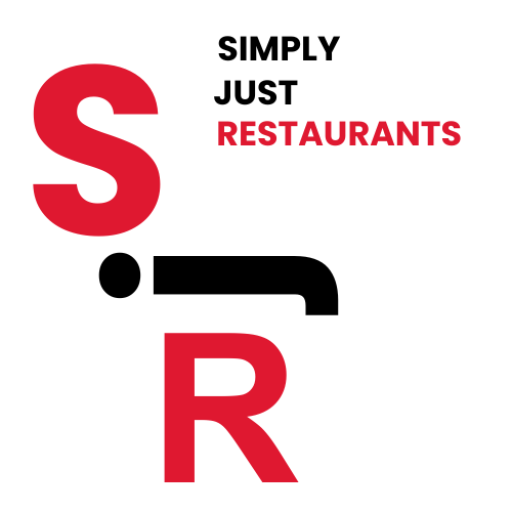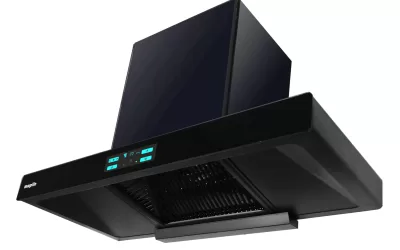Introduction To Bar Equipment
Bar equipment is essential for efficient service, quality beverages, and a successful operation. This guide covers various types of bar equipment, their uses, maintenance, and tips for selecting the best options for your bar.
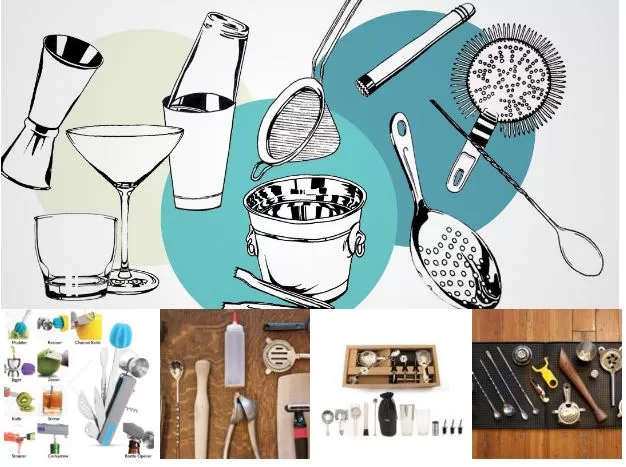
1. Essential Bar Equipment
a. Bar Stations
- Description:
- Bar stations are the workstations where bartenders prepare and serve drinks.
- They typically include sinks, ice bins, speed rails, and bottle wells.
- Features:
- Ice Bins: For storing ice used in drinks.
- Speed Rails: Conveniently located rails for frequently used bottles.
- Sinks: For washing utensils and glassware.
- Bottle Wells: For storing backup bottles.
- Considerations:
- Layout: Ensure the station layout maximizes efficiency and ergonomics.
- Material: Stainless steel is durable and easy to clean.
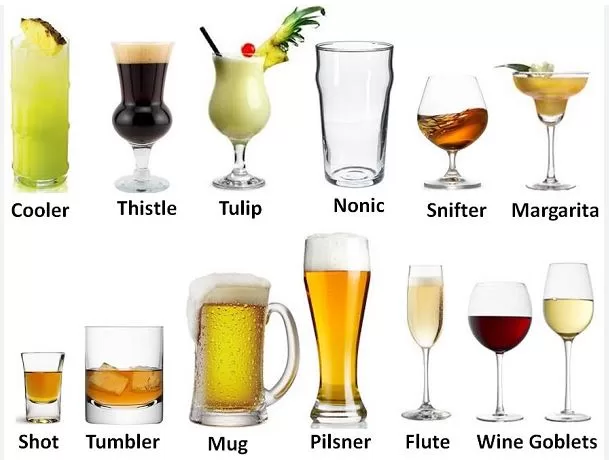
b. Refrigeration Units
- Types:
- Undercounter Refrigerators: Compact units placed under the bar for easy access.
- Back Bar Coolers: Larger units located behind the bar, often with glass doors for displaying beverages.
- Keg Coolers: Specifically designed for storing kegs of beer.
- Features:
- Adjustable shelving for different bottle sizes.
- Temperature controls to ensure drinks are served at the ideal temperature.
- Glass doors for visibility and presentation.
- Considerations:
- Size: Choose a size that fits your space and storage needs.
- Energy Efficiency: Look for Energy Star-rated models to reduce operating costs
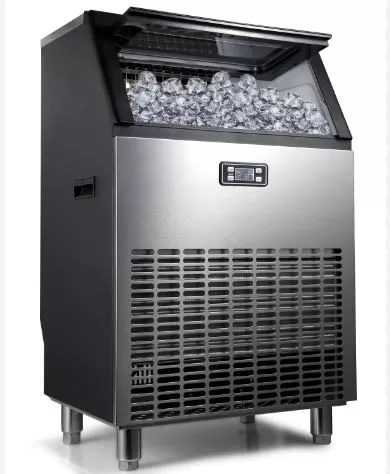
c. Ice Machines
- Types:
- Undercounter Ice Machines: Compact units that fit under the bar.
- Modular Ice Machines: Larger units that can produce a high volume of ice and are typically placed in a separate room.
- Ice Types:
- Cubed Ice: Standard for most drinks.
- Crushed Ice: Used for cocktails like mojitos.
- Nugget Ice: Chewable ice, popular in some cocktails and soft drinks.
- Considerations:
- Production Capacity: Ensure the machine can produce enough ice for your busiest times.
- Maintenance: Regular cleaning and descaling are essential for efficiency and hygiene.
d. Blenders
- Description:
- Blenders are used for making frozen drinks and smoothies.
- High-performance blenders can crush ice and blend ingredients smoothly.
- Features:
- Variable speed settings for different blending needs.
- Durable blades that can handle ice and hard ingredients.
- Noise-reducing covers to minimize disruption in the bar area.
- Considerations:
- Power: Choose a blender with enough power to handle your drink menu.
- Ease of Cleaning: Look for blenders with removable blades and dishwasher-safe parts.
e. Glassware
- Types:
- Highball Glasses: For mixed drinks and cocktails.
- Rocks Glasses: For serving spirits on the rocks or short cocktails.
- Martini Glasses: For martinis and similar cocktails.
- Wine Glasses: For red and white wines.
- Beer Glasses: Various types for different styles of beer.
- Features:
- Durability: Choose glassware that can withstand frequent use and washing.
- Style: Select designs that complement your bar’s theme and enhance drink presentation.
- Considerations:
- Quantity: Ensure you have enough glassware to handle peak times.
- Storage: Plan for sufficient storage space to keep glassware organized and easily accessible.

2. Bar Tools and Utensils
a. Cocktail Shakers
- Types:
- Boston Shaker: Consists of a metal tin and a mixing glass.
- Cobbler Shaker: Includes a metal tin, a built-in strainer, and a lid.
- Features:
- Tight seal to prevent leaks.
- Comfortable grip for easy shaking.
- Considerations:
- Material: Stainless steel is durable and easy to clean.
- Size: Choose a size that matches your drink volume needs.
b. Jiggers
- Description:
- Jiggers are measuring devices used to ensure precise measurements of spirits and mixers.
- Features:
- Dual-sided with different measurement capacities.
- Marked measurements for accuracy.
- Considerations:
- Material: Stainless steel or plastic.
- Ease of Use: Look for jiggers with clear markings and comfortable handling.
c. Muddlers
- Description:
- Muddlers are used to crush and mix ingredients like herbs, fruits, and sugar in cocktails.
- Features:
- Grooved or flat ends for different muddling needs.
- Comfortable grip for easy handling.
- Considerations:
- Material: Wood, stainless steel, or plastic.
- Size: Choose a size that fits comfortably in your hand.
d. Strainers
- Types:
- Hawthorne Strainer: With a spring coil for straining out ice and other solids.
- Julep Strainer: A perforated metal spoon for straining stirred cocktails.
- Fine Mesh Strainer: For double-straining cocktails to remove fine particles.
- Features:
- Durable construction for frequent use.
- Easy to clean and maintain.
- Considerations:
- Size: Ensure the strainer fits your shaker and glassware.
- Ease of Use: Look for strainers with comfortable handles and effective straining capabilities.
e. Bar Spoons
- Description:
- Bar spoons are long-handled spoons used for stirring and layering drinks.
- Features:
- Spiral handles for better grip and control.
- Weighted ends for balance.
- Considerations:
- Material: Stainless steel is durable and easy to clean.
- Length: Choose a length that matches your glassware and mixing needs.
f. Bottle Openers and Corkscrews
- Description:
- Essential tools for opening beer bottles and wine bottles.
- Features:
- Sturdy construction for frequent use.
- Compact and easy to handle.
- Considerations:
- Multi-functionality: Some tools combine a bottle opener, corkscrew, and foil cutter.
- Durability: Choose high-quality materials that can withstand frequent use.
g. Pour Spouts
- Description:
- Pour spouts fit onto liquor bottles to control the flow of spirits when pouring.
- Features:
- Non-drip design to prevent spills.
- Various flow rates for different pouring needs.
- Considerations:
- Fit: Ensure the pour spouts fit your bottle sizes.
- Material: Choose durable, easy-to-clean materials like stainless steel or plastic.
- Boston Shaker: Consists of a metal tin and a mixing glass.
- Cobbler Shaker: Includes a metal tin, a built-in strainer, and a lid.
- Tight seal to prevent leaks.
- Comfortable grip for easy shaking.
- Material: Stainless steel is durable and easy to clean.
- Size: Choose a size that matches your drink volume needs.
- Jiggers are measuring devices used to ensure precise measurements of spirits and mixers.
- Dual-sided with different measurement capacities.
- Marked measurements for accuracy.
- Material: Stainless steel or plastic.
- Ease of Use: Look for jiggers with clear markings and comfortable handling.
- Muddlers are used to crush and mix ingredients like herbs, fruits, and sugar in cocktails.
- Grooved or flat ends for different muddling needs.
- Comfortable grip for easy handling.
- Material: Wood, stainless steel, or plastic.
- Size: Choose a size that fits comfortably in your hand.
- Hawthorne Strainer: With a spring coil for straining out ice and other solids.
- Julep Strainer: A perforated metal spoon for straining stirred cocktails.
- Fine Mesh Strainer: For double-straining cocktails to remove fine particles.
- Durable construction for frequent use.
- Easy to clean and maintain.
- Size: Ensure the strainer fits your shaker and glassware.
- Ease of Use: Look for strainers with comfortable handles and effective straining capabilities.
- Bar spoons are long-handled spoons used for stirring and layering drinks.
- Spiral handles for better grip and control.
- Weighted ends for balance.
- Material: Stainless steel is durable and easy to clean.
- Length: Choose a length that matches your glassware and mixing needs.
- Essential tools for opening beer bottles and wine bottles.
- Sturdy construction for frequent use.
- Compact and easy to handle.
- Multi-functionality: Some tools combine a bottle opener, corkscrew, and foil cutter.
- Durability: Choose high-quality materials that can withstand frequent use.
- Pour spouts fit onto liquor bottles to control the flow of spirits when pouring.
- Non-drip design to prevent spills.
- Various flow rates for different pouring needs.
- Fit: Ensure the pour spouts fit your bottle sizes.
- Material: Choose durable, easy-to-clean materials like stainless steel or plastic.
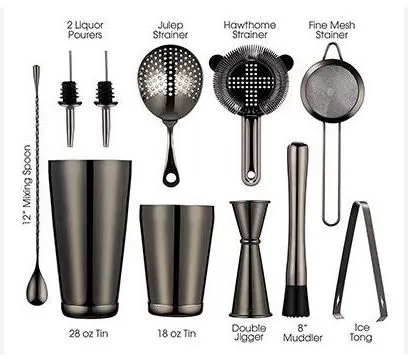
3. Specialized Bar Equipment
a. Draft Beer Systems
- Description:
- Draft beer systems dispense beer from kegs through taps, providing fresh, cold beer.
- Components:
- Keg: The container holding the beer.
- Keg Coupler: Connects the keg to the draft system.
- CO2 Tank: Provides the pressure to dispense the beer.
- Tap: The faucet through which the beer is poured.
- Considerations:
- Number of Taps: Choose a system with enough taps to offer a variety of beers.
- Maintenance: Regular cleaning and maintenance are essential for quality and hygiene.
b. Wine Preservation Systems
- Description:
- These systems keep opened wine bottles fresh by removing air and sealing the bottle.
- Types:
- Vacuum Systems: Remove air from the bottle to prevent oxidation.
- Gas Systems: Use inert gas to replace air and preserve the wine.
- Considerations:
- Capacity: Choose a system that fits your wine service volume.
- Ease of Use: Look for systems that are easy to operate and maintain.
c. Frozen Drink Machines
- Description:
- Frozen drink machines make and dispense frozen cocktails like margaritas and daiquiris.
- Features:
- Adjustable settings for different drink types.
- Capacity to produce and store a large volume of frozen drinks.
- Considerations:
- Size: Ensure the machine fits your space and production needs.
- Maintenance: Regular cleaning is essential to prevent clogs and ensure smooth operation.
d. Soda Guns
- Description:
- Soda guns dispense various carbonated and non-carbonated beverages.
- Features:
- Multiple buttons for different drink options.
- Easy connection to syrup lines and CO2 tanks.
- Considerations:
- Number of Drinks: Choose a soda gun with enough options for your menu.
- Maintenance: Regular cleaning and maintenance are necessary to ensure quality and hygiene.
e. Coffee Machines
- Description:
- Coffee machines are essential for serving hot beverages like coffee and espresso.
- Types:
- Drip Coffee Makers: For brewing large quantities of coffee.
- Espresso Machines: For making espresso and espresso-based drinks.
- Considerations:
- Capacity: Choose a machine that meets your service volume.
- Features: Look for machines with programmable settings, steam wands, and easy maintenance.
- Draft beer systems dispense beer from kegs through taps, providing fresh, cold beer.
- Keg: The container holding the beer.
- Keg Coupler: Connects the keg to the draft system.
- CO2 Tank: Provides the pressure to dispense the beer.
- Tap: The faucet through which the beer is poured.
- Number of Taps: Choose a system with enough taps to offer a variety of beers.
- Maintenance: Regular cleaning and maintenance are essential for quality and hygiene.
- These systems keep opened wine bottles fresh by removing air and sealing the bottle.
- Vacuum Systems: Remove air from the bottle to prevent oxidation.
- Gas Systems: Use inert gas to replace air and preserve the wine.
- Capacity: Choose a system that fits your wine service volume.
- Ease of Use: Look for systems that are easy to operate and maintain.
- Frozen drink machines make and dispense frozen cocktails like margaritas and daiquiris.
- Adjustable settings for different drink types.
- Capacity to produce and store a large volume of frozen drinks.
- Size: Ensure the machine fits your space and production needs.
- Maintenance: Regular cleaning is essential to prevent clogs and ensure smooth operation.
- Soda guns dispense various carbonated and non-carbonated beverages.
- Multiple buttons for different drink options.
- Easy connection to syrup lines and CO2 tanks.
- Number of Drinks: Choose a soda gun with enough options for your menu.
- Maintenance: Regular cleaning and maintenance are necessary to ensure quality and hygiene.
- Coffee machines are essential for serving hot beverages like coffee and espresso.
- Drip Coffee Makers: For brewing large quantities of coffee.
- Espresso Machines: For making espresso and espresso-based drinks.
- Capacity: Choose a machine that meets your service volume.
- Features: Look for machines with programmable settings, steam wands, and easy maintenance.
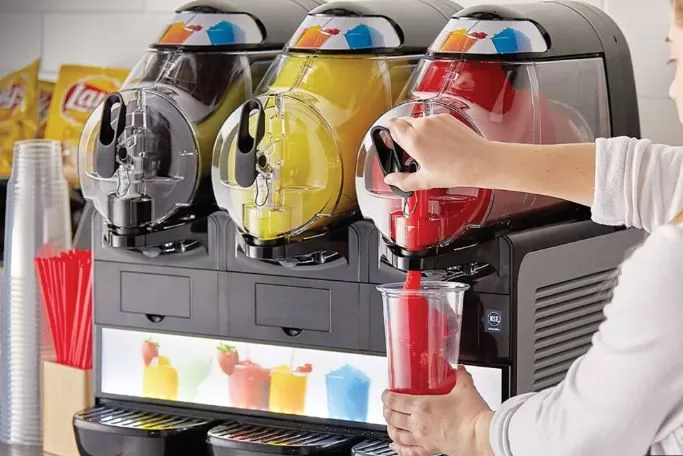
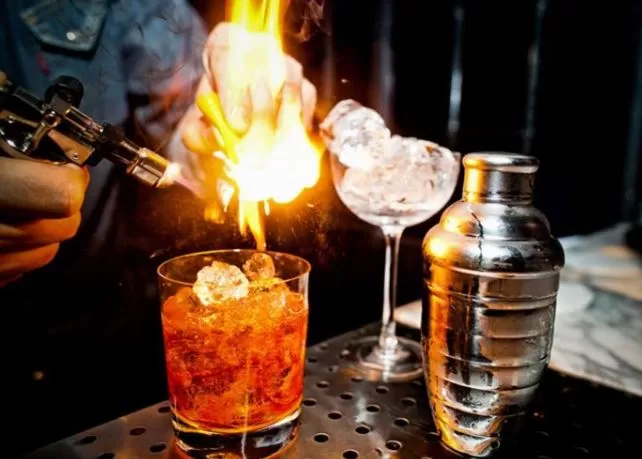
4. Maintenance and Safety
a. Cleaning and Sanitizing
- Daily Cleaning:
- Clean and sanitize all surfaces, tools, and equipment at the end of each shift.
- Use food-safe cleaning agents and follow manufacturer guidelines.
- Weekly Deep Cleaning:
- Perform a thorough cleaning of all equipment, including removing and cleaning parts.
- Inspect for any signs of wear or damage and address them promptly.
b. Regular Inspections
- Routine Checks:
- Inspect equipment regularly for signs of wear, damage, or malfunction.
- Address any issues immediately to prevent larger problems.
- Professional Maintenance:
- Schedule regular maintenance with qualified technicians for complex equipment like draft systems and refrigeration units.
- Follow the manufacturer’s maintenance schedule to ensure optimal performance.
c. Safety Measures
- Electrical Safety:
- Ensure all electrical equipment is properly grounded and in good working condition.
- Avoid overloading circuits and regularly inspect cords and plugs for damage.
- Handling Sharp Tools:
- Use caution when handling sharp tools like knives and glassware.
- Store sharp tools safely and use protective gear when necessary.
- Preventing Slips and Falls:
- Keep floors clean and dry.
- Use non-slip mats in high-traffic areas.
- Clean and sanitize all surfaces, tools, and equipment at the end of each shift.
- Use food-safe cleaning agents and follow manufacturer guidelines.
- Perform a thorough cleaning of all equipment, including removing and cleaning parts.
- Inspect for any signs of wear or damage and address them promptly.
- Inspect equipment regularly for signs of wear, damage, or malfunction.
- Address any issues immediately to prevent larger problems.
- Schedule regular maintenance with qualified technicians for complex equipment like draft systems and refrigeration units.
- Follow the manufacturer’s maintenance schedule to ensure optimal performance.
- Ensure all electrical equipment is properly grounded and in good working condition.
- Avoid overloading circuits and regularly inspect cords and plugs for damage.
- Use caution when handling sharp tools like knives and glassware.
- Store sharp tools safely and use protective gear when necessary.
- Keep floors clean and dry.
- Use non-slip mats in high-traffic areas.
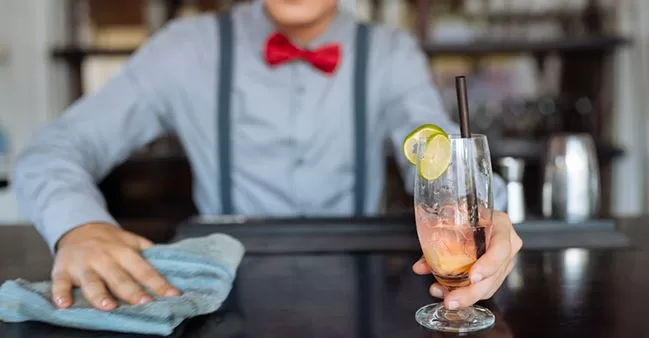
Conclusion
Having the right bar equipment is crucial for efficient operation, high-quality beverages, and customer satisfaction. From essential tools like shakers and jiggers to specialized equipment like draft beer systems and wine preservation systems, each piece plays a vital role in the bar’s success. Regular maintenance and proper handling of equipment ensure longevity and safety, allowing bartenders to focus on delivering excellent service. By investing in quality equipment and maintaining it well, bar owners can create a productive and enjoyable environment for both staff and customers.
About Author sudeshna mukherjee
You May Also Like…
2024 Buyer’s Guide: How to Choose the Best Auto Clean Chimney for Your Kitchen
IntroductionA chimney is essential for a clean and safe kitchen. Kitchen chimneys are essential for aesthetics and...
How to Choose the Right POS Software for Your Restaurant in India
Introduction Profits are what make it all worthwhile. Running a successful restaurant requires an efficient...

